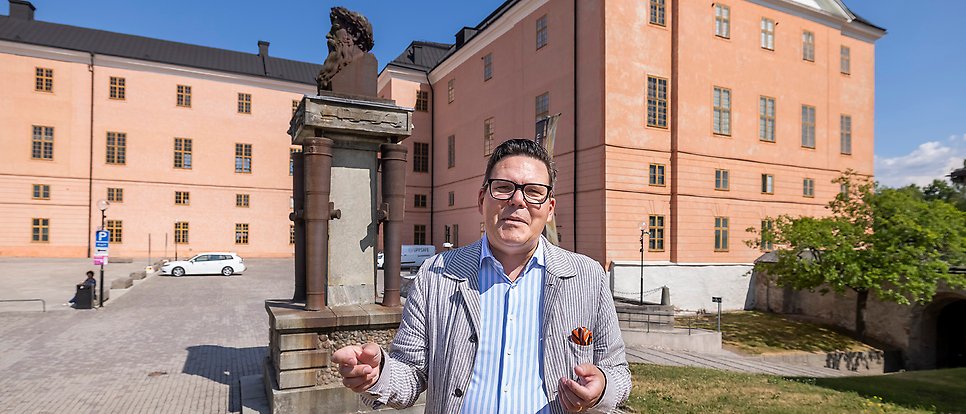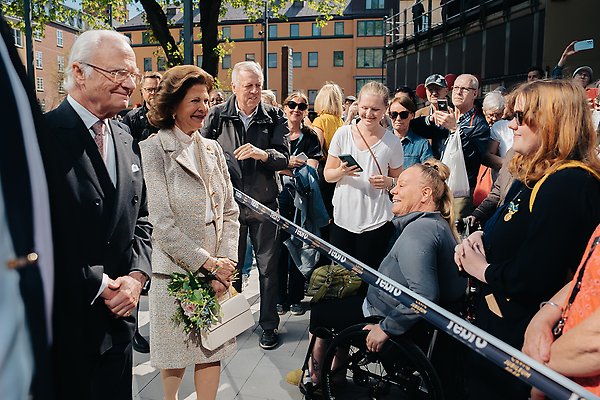2023 a jubilee year for Carl XVI Gustaf and Gustav Vasa

The election of Gustav Vasa as Sweden’s king was a vital chapter of Swedish history, according to Mikael Alm, Professor of History. Photo: Staffan Claesson / BILDBYRÅN
15 September will mark 50 years since Carl XVI Gustaf became king of Sweden. This year will also mark 500 years since Gustav Vasa was elected king and the Sweden we know today began to take shape. While many other European countries have dismantled their monarchies, the royal family appears to retain public support here.
“History shows that things can change extremely fast these days. The monarchy's standing rests in part on the fact that it manages to reinvent itself constantly. In that sense, the Swedish form of monarchy has been very successful,” explains Mikael Alm, Professor at the Department of History who has conducted research into royal power.
Great leaps in modernisation in royal families are often made in connection with the succession to the throne, when a new young regent takes over.
“When our king took the throne in 1973, for example, many things changed in terms of the Swedish monarchy. He had been very popular before, but now it took on new heights,” continues Alm.
Little prince and the Haga princesses
Before Carl XVI Gustaf, it had never been possible to follow a king of Sweden so frequently in documentary films and weekly newspaper reports from a very young age. The public was invited to follow the upbringing of the "Little Prince" and his older sisters, the “Haga princesses", through games, school starts, family celebrations and their incorporation into formal royal life. When the time came for his accession to the throne in 1973, the atmosphere was not quite as easygoing. Strong republican winds were blowing and the monarchy as a form of government was questioned in many quarters. In 1975, a new form of government was also introduced which limited the king’s power to being solely representative.
“There was a radical social climate at the time, so it was probably not that easy for him. He was very young and must have felt quite alone. He had his uncle Bertil for advice and support,” says Alm.
His marriage to Silvia Sommerlath in 1976 proved to be something of a turning point. Combined with the king’s involvement in several different popular movements, speeches to the people and the royal family allowing themselves to be interviewed by the media, this proved to be a successful strategy that increased support for the palace.

The strength of the Swedish monarchy is that it is so popular, says Mikael Alm. In the picture, the royal couple meets people in Örebro County. Photo: Clément Morin/The Royal Court of Sweden
“The king has appeared in the media in a different way, playing an active role in everything from ‘at home’ reports to someone sneaking up behind him at the Nobel ceremony and asking a question that he has to answer on the spot and so on. He has become part of this media landscape. One very clear example is that even as the palace has shrunk, its press department has exploded in size during the 20th century. That tells you something,” says Alm.
The end of the Kalmar Union
This year will not only see the king celebrate 50 years on the throne, the country will also mark 500 years since Gustav Vasa was elected king on 6 June 1523. The election marked the end of both the Kalmar Union and the Middle Ages.
“I wouldn’t say that this is where Sweden’s history begins, but a vital chapter in Sweden’s history certainly began when Gustav Vasa was elected. During his reign, the Reformation was carried out, Sweden became Protestant, the hereditary monarchy was introduced, the kingdom’s borders were drawn – the geography took on the form which, following the wars of the 17th century, was then expanded to include Sweden’s current borders. Central state administration that we recognise from history started to take shape,” notes Alm.

Mikael Alm at Gustav Vasa's grave in Uppsala Cathedral. Photo: Staffan Claesson / BILDBYRÅN
The election of Gustav Vasa on 6 June 1523 is one of the reasons that we celebrate Sweden’s national day on that day each year. The other reason is that the 1809 Instrument of Government was signed by Karl XIII on that same date. In signing that Instrument, the king approved strong limitations to his power.
“This was a very unsettled period. Kings were deposed and murdered. The murder of Marshal Axel von Fersen was a clear symptom of social degradation, as the kingdom’s highest-ranking official was lynched in the middle of the capital. It could be said that 1809 was the equivalent of the French Revolution in Sweden,” explains Alm.
Karl XIII had no legitimate heirs and the monarchy risked dying out with him. However, this issue was solved when the king adopted Napoleon’s marshals, Jean Baptiste Bernadotte, who was later crowned Karl XIV Johan, and a new royal family took over. Karl XIV's great-great-great-grandson Carl XVI Gustaf has now occupied the Swedish throne longer than any other monarch before him.
Åsa Malmberg
